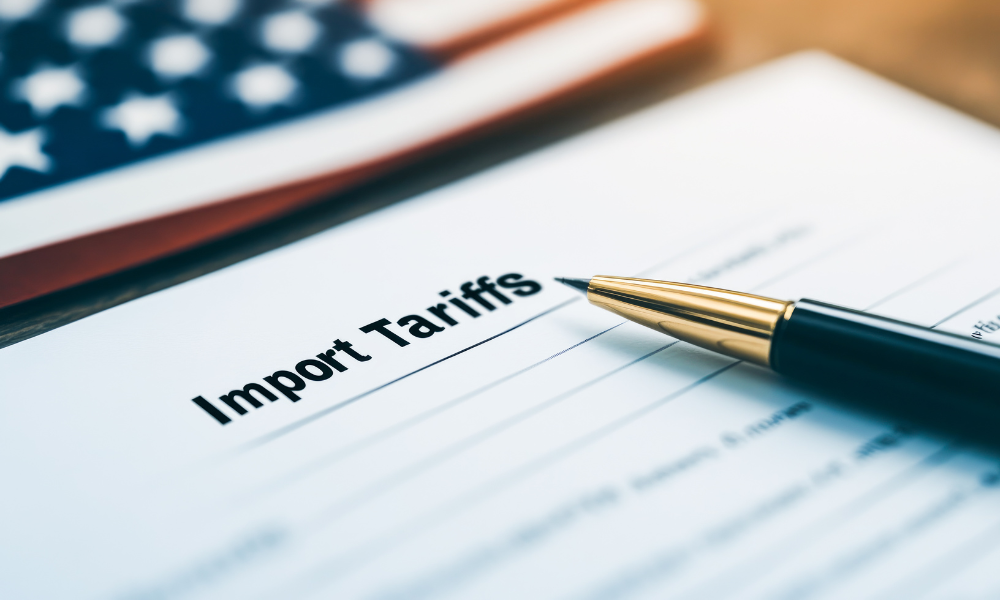With consistent cash flow and reduced upside risk, equity income strategies are proving resilient in a slower-growth environment

There was a time when a Trump tweet could send global markets swinging wildly within minutes. But today, investors seem harder to shake. “There’s still uncertainty out there, but the way the market reacts to it has changed,” says Mike Dragosits, Portfolio Manager at Harvest ETFs. “We’ve gone from sharp, knee-jerk volatility to something more measured. People are starting to look through the headlines.”
That shift in temperament -- less reactive, more discerning -- is informing portfolio positioning in a very specific way: toward simplicity, clarity, and consistent income. Many Canadian investors are turning back to domestic equity income strategies.
The result is a more deliberate approach to risk. Instead of exiting markets altogether, many investors are repositioning toward assets that offer a degree of defensiveness and income stability. That includes Canadian equity income ETFs, particularly those focused on large-cap names.
Defensive exposure through Canadian large caps
For investors wanting exposure to equity markets without taking on excess risk, the structure of the Canadian market offers some practical advantages. “The sectors that dominate the TSX -- financials, pipelines, insurance, utilities—tend to be more stable and less cyclical,” says Dragosits.
These sectors are also where many of Canada’s largest dividend-paying companies operate. The Harvest Canadian Equity Income Leaders ETF (HLIF:TSX), for example, holds an equal-weight portfolio of 30 high-yielding Canadian stocks. It excludes the top 5 percent of yielders to avoid potentially unsustainable payouts and combines the holdings with a covered call overlay.
The result is a portfolio tilted toward established, cash-generating companies that typically experience lower earnings volatility.
Launched in 2022, HLIF holds an equal-weight basket of 30 high-yielding Canadian blue-chip stocks. It excludes the top 5% of dividend payers, which Dragosits says helps avoid companies with unsustainable payout ratios. The real differentiator, though, is what sits on top: an actively managed covered call strategy that enhances cash flow by writing options on up to 33% of each name in the portfolio.
The result? As of June 2025, the underlying stocks yielded 4.56%, while HLIF’s total distribution yield was 7.09%. That gap is supported by option premiums generated through the fund’s active management overlay.
“You’re giving up some of the upside in a surging market,” he admits. “But you’re gaining a more reliable cash stream across all kinds of market conditions -- rising, falling, or flat.”
The Canadian market is dominated by sectors that tend to operate in concentrated environments -- banks, pipelines, insurance, and utilities. “Many of these companies function in oligopolistic markets,” Dragosits says. “There’s limited competition and low pricing pressure.”
These structural characteristics create a more predictable business environment. Revenue streams tend to be steady, even when broader economic growth slows. That makes them well suited to income-focused strategies.
“These are large, mature businesses. They’re not high growth, but they generate stable cash flow and consistent dividends,” he adds. “That’s the kind of profile you want when the focus is on income and downside protection.”
Despite higher bond yields, investor appetite for equity income has not gone away. Covered call strategies like HLIF remain relevant, especially in taxable accounts where the option premiums are treated as capital gains, not interest.
“Fixed income has become more competitive, but many investors still prefer the flexibility and potential tax advantages that come with equity-based strategies,” says Dragosits. “Particularly in periods of uncertainty, the consistency of cash flow matters.”
This is especially true for those seeking income without committing fully to traditional bond funds, which remain exposed to duration risk and central bank policy shifts.
Trade policy adds another layer of uncertainty
While economic data remains mixed, political developments are once again contributing to market instability. President Donald Trump has outlined a series of proposed tariffs that would significantly raise duties on goods from several key trading partners. If enacted, these measures would impose tariffs of 35 percent on Canadian imports, 30 percent on goods from the EU and Mexico, and 25 percent on products from Japan and South Korea.
The August 1 deadline for implementation is approaching, but investors are not reacting as strongly as they might have in past cycles. Some are positioning around what has been informally called the “TACO trade” -- short for Trump Always Chickens Out. The term refers to the idea that bold policy threats are often softened or reversed when market pressure builds.
“There’s more scepticism built into the market now,” Dragosits says. “Investors are more selective in how they respond to headlines, but the risk is still present.”
As the second half of the year approaches, investors may appear less reactive but are no less aware of risk.
“Diversification still matters,” says Dragosits. “And holding a portfolio of large-cap Canadian companies that generate stable income can provide a useful foundation when the outlook remains unclear.”



